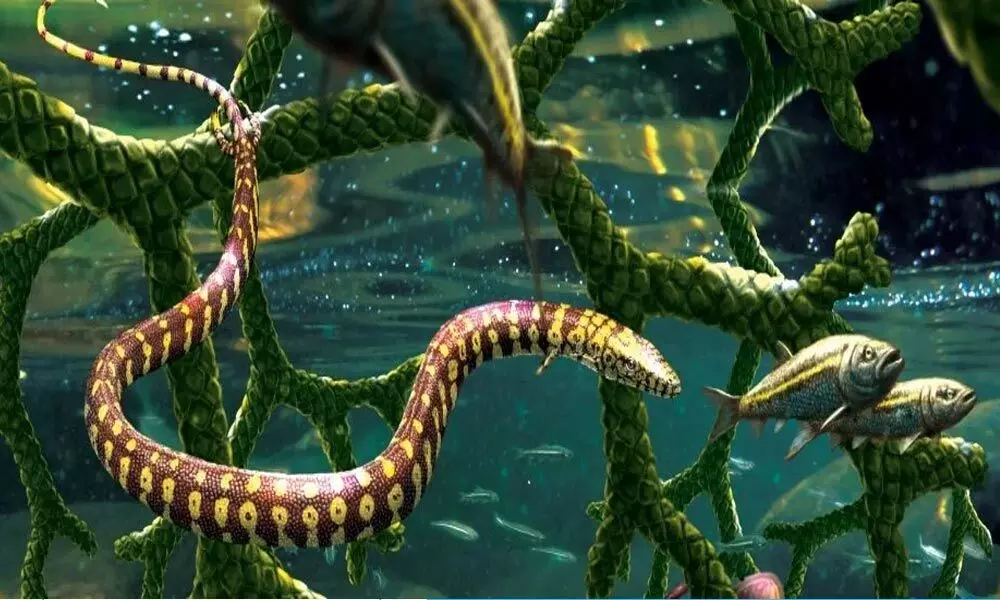Live
- Row over 2 BHK units allocation
- Gadwal: Blood donation camp conducted
- Mahabubnagar: Grandeur marks X’mas festivities
- EPFO adds 13.41L net members as employment rises
- Pope calls for world peace
- Largest Jain museum mirrors Indian value system
- Man sets himself on fire near Parl building
- MLA participates in prayers at North Parish Church
- Involvement Of Canadian Colleges Under Lens: ED probes human trafficking racket
- Water security biggest challenge of 21stC : PM
Just In
The Famous Discovery Of A Four-Legged Snake Fossil Had Been Re-Examined


An artistic reconstruction of Tetrapodophis amplectus in an aquatic environment. (Julius Csotonyi)
- The full skeleton of a beast depicting a snake was discovered in Cretaceous sandstone from Brazil, although with one notable addition with four small vestigial legs.
- The team's main finding is that Tetrapodophis amplectus is not a snake and has been misclassified.
Paleontologists made a remarkable discovery in 2015. The full skeleton of a beast depicting a snake was discovered in Cretaceous sandstone from Brazil, although with one notable addition with four small vestigial legs. This was sort of a 'holy grail' for palaeontologists. Tetrapodophis amplectus, was the term used and was the lacking connection between snakes and lizards.
According to the new studies, Tetrapodophis from the Greek, meaning four-legged snake is a species of extinct sea lizard that existed more than 110 million years ago. The team's main finding is that Tetrapodophis amplectus is not a snake and has been misclassified. Instead, every element of its morphology matches that of dolichosaurs, a genus of extinct marine lizards from the Cretaceous epoch. Paleontologists expected to find a four-limbed snake in the fossil evidences.
The creature's bones were meticulously studied and analysed in the 2015 study, while paleontologist Michael Caldwell of the University of Alberta in Canada and his team team provided a rebuttal at a meeting of the Society of Vertebrate Paleontology in the month of October, 2016. They discovered that the teeth were not hooked or orientated like a snake's teeth, and that the skull and skeleton were not like those of a snake after inspecting the skeleton. The team couldn't see the snake's big ventral scales, which would have helped them identify it. The remains of one of its final meals, which seemed to be fishbones consistent with an aquatic creature were found in its stomach.
The new study goes even deeper, focusing on the original 2015 study completely overlooked about the stone in which the skeleton was contained.
Meanwhile, in the aftermath of the 2016 criticisms, the palaeontologists who made the original statements about Tetraphodis' serpent membership stood by their findings. Now that both findings have been published, it will be up to future researchers to decide whether to take sides in the controversy. The Tetrapodophis, as it is now known, has a lot to teach us. The little skeleton has been meticulously kept, making it an invaluable resource for dolichosaur research. The specimen is currently in private hands, in violation of Brazilian law.

© 2024 Hyderabad Media House Limited/The Hans India. All rights reserved. Powered by hocalwire.com






